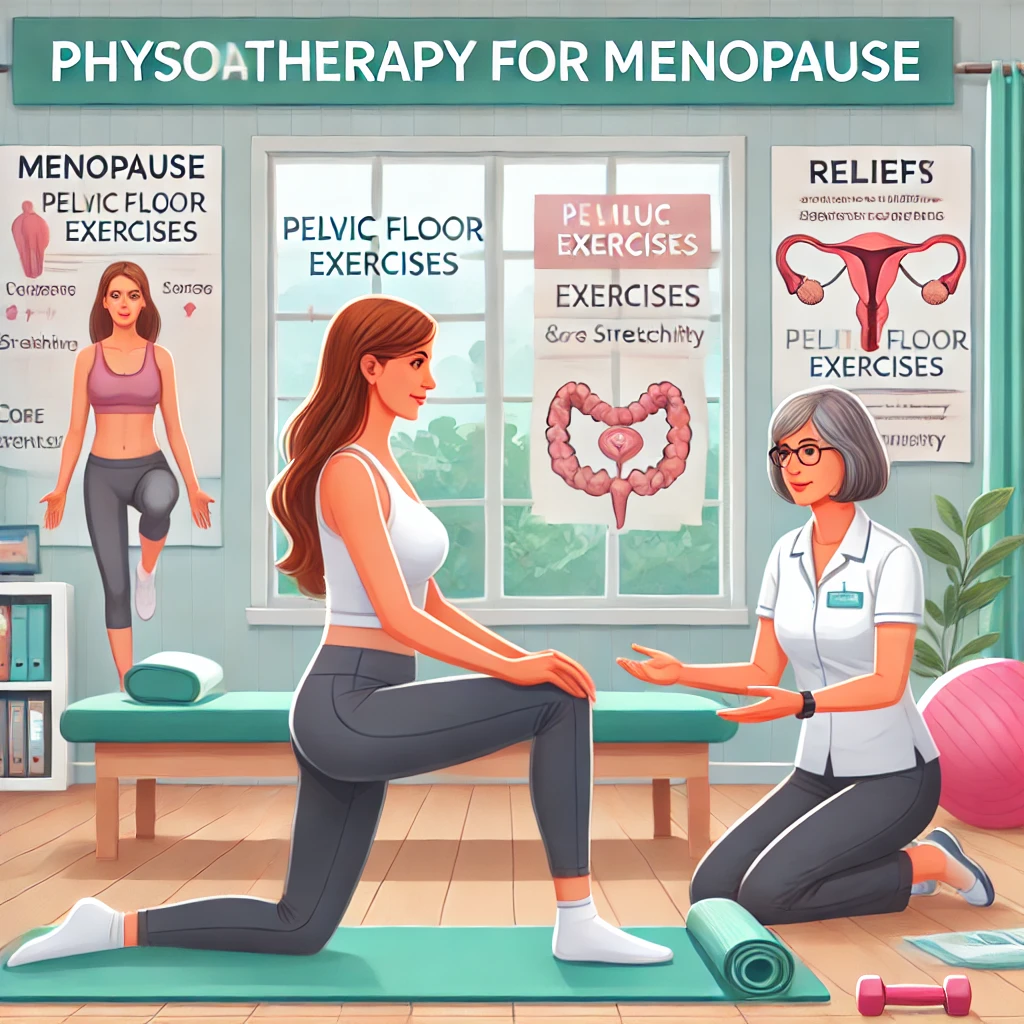In today’s fast-paced world, where injuries and discomfort are common, people seek treatments for relief and well-being. Two of the most widely recognized therapies for treating physical ailments and improving mobility are physiotherapy and massage therapy. While they share some similarities, they differ significantly in their approaches, techniques, and goals. To make informed decisions about your health, it’s essential to understand the distinctions between physiotherapy and massage therapy, as well as their respective benefits.
What is Physiotherapy?

Physiotherapy, or physical therapy, focuses on diagnosing, treating, and preventing physical dysfunctions. It is key to rehabilitation and improving the quality of life for those with injuries, impairments, or chronic conditions.
Physiotherapists are licensed healthcare experts who use evidence-based strategies to help patients regain strength, flexibility, and function after injury or illness. Their training covers anatomy, physiology, biomechanics, and rehabilitation techniques, making them well-equipped to treat musculoskeletal, neurological, and cardiovascular disorders.
Common Techniques Used in Physiotherapy

Physiotherapy treatments often involve a combination of techniques tailored to the patient’s specific condition and goals. Some common approaches include:
- Exercise Therapy: One of the key components of physiotherapy is healing exercise, which targets specific muscle mass and joints to restore strength, balance, and flexibility.
- Manual Therapy: This hands-on technique includes mobilizing joints and soft tissues to lessen pain and enhance range of motion.
- Electrotherapy: Modalities including ultrasound, electrical stimulation, and laser therapy can be used to reduce inflammation, manage pain, and promote tissue healing.
- Hydrotherapy: Water-based exercises and treatments are particularly useful for patients with joint pain or those recovering from surgery.
- Education and Advice: Physiotherapists regularly educate patients on posture, ergonomics, and way of life changes to prevent further damage and promote long-term health.
Who Can Benefit from Physiotherapy?
Physiotherapy is suitable for individuals dealing with various health issues, including:
- Sports Injuries: Whether it`s a sprain, strain, or ligament tear, physiotherapy is vital for rehabilitation and preventing future injuries.
- Post-Surgical Rehabilitation: After surgeries like joint replacements or tendon repairs, physiotherapy helps regain function and mobility.
- Chronic Pain: Conditions including arthritis, lower back pain, or fibromyalgia benefit from physiotherapy as it reduces pain and improves daily functioning.
- Neurological Conditions: Stroke, multiple sclerosis, and Parkinson`s disease patients can enhance movement, strength, and coordination through physiotherapy.
- Pediatric and Geriatric Care: Physiotherapy is also valuable for children with developmental conditions and older adults looking to keep mobility and independence.
What is Massage Therapy?

Massage therapy is a form of treatment that specializes in manipulating the soft tissues of the body, such as muscles, tendons, ligaments, and fascia. It is primarily used to reduce muscle tension, alleviate stress, and promote rest. Massage therapy also improves blood circulation and helps release toxins trapped in muscle tissues, which can lead to a range of health benefits. Massage therapists are trained in various techniques to target specific areas of pain or to provide a full-body relaxation experience. Unlike physiotherapists, they do not diagnose or treat specific clinical conditions but rather provide therapeutic care to enhance normal health and manage pain.
Common Techniques Used in Massage Therapy

Massage therapy encompasses various techniques, each serving a unique purpose. Some popular types of massage include:
- Swedish Massage: This is the most common form of massage, related to long, gliding strokes to relax muscles, enhance circulation, and relieve stress.
- Deep Tissue Massage: This technique targets the deeper layers of muscle tissue and fascia to release chronic muscle tension and enhance mobility.
- Sports Massage: Tailored for athletes, sports massage specializes in preventing injuries and enhancing overall performance by targeting unique muscle groups.
- Trigger Point Therapy: This technique addresses knots or tight bands of muscle fibers which can cause pain in different areas of the body.
- Myofascial Release: A technique aimed at releasing tension in the fascia (connective tissue surrounding muscles), which can become tight or restrained because of injury or stress.
Who Can Benefit from Massage Therapy?
Massage therapy is highly beneficial for individuals dealing with:
- Muscle Tension and Soreness: Whether it`s because of physical activity or prolonged periods of inactivity, massage helps to relieve tightness and discomfort.
- Stress and Anxiety: Massage promotes relaxation, reduces cortisol levels (the stress hormone), and enhances the production of serotonin and dopamine, which improve mood.
- Headaches and Migraines: By releasing anxiety in the neck, shoulders, and head, massage can reduce the frequency and intensity of headaches.
- Poor Circulation: The mild pressure and movements used in massage therapy can improve blood & lymphatic circulation, which aids in healing & detoxification.
- Post-Workout Recovery: Athletes and health enthusiasts benefit from massage therapy to speed up recovery, lessen soreness, and enhance muscle function.
Key Differences Between Physiotherapy and Massage Therapy
While both physiotherapy and massage therapy aim to improve physical health and well-being, they differ in several ways:
Medical vs. Holistic Approach:
- Physiotherapy is a medically-orientated practice, focusing on diagnosing, treating, and rehabilitating injuries and conditions.
- Massage therapy is more holistic, centered around relaxation, stress relief, and enhancing soft tissue health.
Scope of Practice:
- Physiotherapists treat a broadrange of physical impairments and diseases, oftenworking in collaboration with doctors, surgeons, and other healthcare providers.
- Massage therapists focus primarily at the muscles and soft tissues, and their scope is generally limited to ache relief and relaxation.
Treatment Goals:
- Physiotherapy`s principal aim is to repair characteristic and mobility, whether or not thru exercise, guide remedy, or different modalities.
- Massage therapy is more focused on alleviating muscle tension, promoting relaxation, and improving overall well-being.
Education and Training:
- Physiotherapists undergo extensive education, often earning a degree in physiotherapy and passing licensing exams. Their training includes knowledge of the body`s systems and the treatment of complex medical conditions.
- Massage therapists complete certification programs that focus on anatomy, physiology, and massage techniques but do not diagnose or treat medical conditions.
Use of Technology:
- Physiotherapy may include advanced equipment like ultrasound, electrical stimulation, and hydrotherapy to resource recovery.
- Massage therapy relies solely on hands-on techniques with out the use of medical equipment or technology.
Which One Should You Choose?
The choice between physiotherapy and massage therapy depends largely on your specific needs and goals.
- If you’re recovering from an injury, surgery, or dealing with chronic pain or a medical condition, physiotherapy is likely the best choice. It offers structured rehabilitation and a medically-supervised approach to restoring function and preventing further injury.
- If you’re looking to relieve stress, reduce muscle tension, or simply enjoy the benefits of relaxation, massage therapy is an excellent option. It helps improve circulation, reduces muscle tightness, and enhances mental well-being.
In some cases, a combination of both therapies might be the most effective approach. Adding massage therapy to physiotherapy benefits many by easing muscle tension and enhancing relaxation.
Conclusion
Physiotherapy and massage therapy each offer unique benefits, and knowing their differences helps you make better health choices. Whether for injury recovery or relaxation, both therapies provide effective solutions.









One thought on “Physiotherapy And Massage Therapy: Which Should You Choose?”